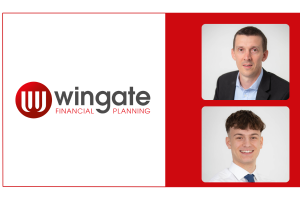Hmmm! The redoubtable Southampton-based platform behemoth Skandia has started 2012 in characteristically robust fashion by jack-in-the-boxing on Citywire and predicting that platform margins will halve by 2015.
According to Skandia, the market is at 30-50bps now, and will be at 20-25bps by 2015. Only 10 platforms will survive. Cue the Destiny’s Child song of your choice.
Now, Skandia is full of very clever people, some of whom are really quite physically imposing. So I won’t point out that making predictions about how many platforms will survive is a bit like predicting the level of the FTSE in a year’s time – a matter of guesswork and really just a way of looking a bit daft in the future.
I won’t point out that there are platforms out there who are already routinely writing business at the 25bps mark if not below, on a transparent, unbundled basis.
While we’re at it, I also won’t point out that we shouldn’t confuse ‘margin’ with ‘price’. There are plenty of platforms out there with a cost base of, say, 30 or 35 basis points. If their factory gate price is 50bps and that’s going to shift to 25, then their margin will do a lot worse than halve. We’ll have to reach for some of those imaginary numbers.
What’s really interesting is that the platforms (encompassing bundled supermarkets and unbundled wraps) with the highest cost bases in bps terms are often – not always – the largest ones. They often, for example, need regular cash injections from their parent. That shouldn’t be the case. If the technology behind this stuff was working properly, margins should improve as assets grow, as the tech takes the weight of the additional AUA without requiring additional headcount. That just ain’t happening in too many cases, and what it shows is that the work needed on the boring, behind the scenes, grungey stuff is a lot more fundamental than just getting the RDR minimum done. This factor, more than headline price will (in my view) determine who’s a survivor and who’s not.
The lang cat always tries to be even-handed, and Skandia are bang on with their bet that platforms will spread further over to pensions and start to nibble at the callused heels of the SIPP market. We’re already seeing moves that bear this out from the more forward-thinking providers such as AJ Bell, who are expanding their SIPP offering out into something that looks a lot more like a platform. They’re also right that passives will play a bigger role as time goes on – just look at the top sellers on the unbundled guys – and that, as usage of platforms is democratised a little, that guarantees will become more popular.
But Skandia, as with so many of their competitors, can’t resist having a swipe at other providers, this time over unit rebates. The unit rebate issue is daft, wrong-headed and the FSA really do need to think again on it. But, having worked with quite a few unbundled wraps over the last wee while, I am pretty sure that they are both specc’ing their developments and lobbying against this proposal at the same time. Multitasking, that sort of thing, with the IT guys sort of working on the development and the marketing guys or whoever out banging the drum.
It’s finicky, awkward and a pain in the Gunther. But it is doable, and for the unbundled guys it is one of relatively few developments required to fulfil minimum RDR requirements. By contrast, providers currently using the bundled model have a huge amount to do to get ready. Not least of which is the work needed to fundamentally alter the economic model they work on, where commercial scale/muscle has to work in the client’s favour rather than the provider’s. I suspect Skandia and others are hoping that this scale will equal better rebates, which will equal more wiggle room for them to keep their platform charge a little bit higher while still staying on the money for the total cost of investing.
I don’t know if that will be the case, but I don’t think we can expect investment houses to be completely supine. It’ll be interesting to see.
But, for what it’s worth, I’m pretty sure that we’ll be seeing the price leaders in 2015 operating around 15 basis points, not 25. And the price – and inflow – leaders almost certainly won’t be the current market incumbents. Now that really will put the frighteners up a few financial controllers.
But my real point is this. We all have a lot of work to do this year and the industry needs to work together to improve outcomes for clients and the advisers that serve them. What we don’t need is internecine squabbling 6 days into the new year. There is no competitive advantage to be gained by it.
The French have an expression – occupe-toi de tes oignons – which means, literally, ‘look after your own onions’. (onions may refer to something else spherical). We probably all need to spend a little more time doing that.




